1. Pepsi’s “Live for Now” with Kendall Jenner (2017)
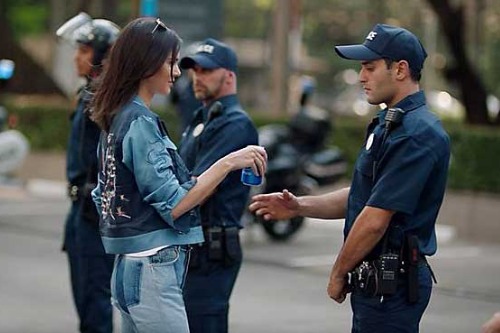
Pepsi’s 2017 ad featuring Kendall Jenner aimed to capture the spirit of unity and protest. In the commercial, Jenner leaves a photoshoot to join a generic protest, ultimately handing a can of Pepsi to a police officer, which seemingly resolves the tension. The ad was criticized for trivializing serious social justice movements, particularly Black Lives Matter, by suggesting that a soft drink could bridge deep societal divides, according to Daniel Victor from The New York Times. Facing intense backlash, Pepsi promptly pulled the ad and issued an apology for missing the mark.
This incident highlighted the risks brands face when attempting to engage with social issues without a nuanced understanding. Many felt that the commercial co-opted the imagery of genuine protests for commercial gain, undermining the real struggles involved. The swift removal of the ad underscored the power of public opinion in the digital age. It served as a cautionary tale for companies to approach sensitive topics with care and authenticity.
2. General Motors’ “Robot” Super Bowl Ad (2007)

In 2007, General Motors aired a Super Bowl commercial featuring an assembly-line robot that, after making a mistake at work, dreams of committing suicide by jumping off a bridge. The ad was intended to showcase GM’s commitment to quality by illustrating the robot’s despair over its error. However, it drew sharp criticism from suicide prevention groups, who argued that it was insensitive to individuals struggling with mental health issues. Responding to the outcry, GM edited the ad to remove the suicide imagery.
The controversy underscored the importance of considering the potential impact of advertising content on vulnerable populations. While the ad aimed to convey a message about high standards, its depiction of suicide overshadowed the intended narrative. This incident reminded advertisers of the need for sensitivity when portraying mental health themes, according to Paul Farhi from The Washington Post. It also highlighted the broader responsibility companies have in shaping public discourse through their messaging.
3. Snickers’ “Mechanics” Super Bowl Ad (2007)
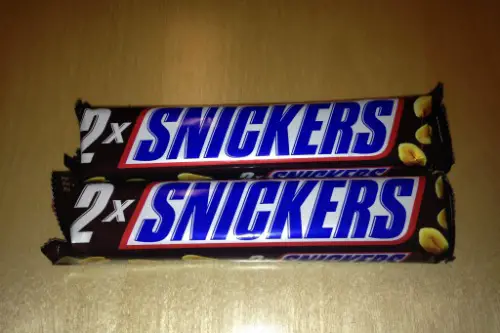
Snickers’ 2007 Super Bowl commercial featured two male mechanics accidentally kissing after sharing a Snickers bar, followed by them engaging in “manly” acts to assert their masculinity. The ad was met with backlash from LGBTQ+ advocacy groups, who deemed it homophobic and perpetuating harmful stereotypes. Critics argued that it reinforced negative perceptions about same-sex affection and promoted toxic masculinity. In response to the criticism, Snickers pulled the ad from its campaign, according to NBC News.
This incident highlighted the need for advertisers to be mindful of the messages their content may convey, intentionally or not. Humor that relies on outdated stereotypes can alienate audiences and damage a brand’s reputation. The swift removal of the ad demonstrated the influence of advocacy groups in holding companies accountable. It also served as a lesson for brands to engage in more inclusive and thoughtful advertising practices.
4. Groupon’s “Tibet” Super Bowl Ad (2011)

Groupon’s 2011 Super Bowl ad began with actor Timothy Hutton highlighting the plight of the Tibetan people, only to pivot to promoting a Groupon deal for Tibetan cuisine. The attempt at humor was widely criticized for making light of a serious humanitarian issue. Viewers felt that the ad was in poor taste, trivializing the struggles of Tibetans for the sake of a punchline, Mark Memmott from NPR explains. Amid the backlash, Groupon pulled the ad and issued an apology.
This controversy underscored the risks of blending social issues with commercial messaging. While the intention may have been to draw attention to the cause, the execution was perceived as insensitive and exploitative. The incident served as a reminder for brands to approach cultural and humanitarian topics with respect and caution. It also highlighted the importance of understanding the potential ramifications of using such issues in marketing campaigns.
5. McDonald’s “Carry On” Ad (2015)

In 2015, McDonald’s released a commercial showcasing various franchise signs displaying messages of support during national tragedies, such as 9/11 and the Boston Marathon bombing. While the ad aimed to highlight the company’s solidarity with affected communities, it faced criticism for appearing to capitalize on these events for marketing purposes. Critics argued that leveraging tragic events to promote the brand was in poor taste. Responding to the negative feedback, McDonald’s discontinued the ad.
This situation highlighted the delicate balance companies must maintain when addressing sensitive topics in their advertising. Even well-intentioned messages can be misconstrued if perceived as self-serving. The backlash emphasized the need for authenticity and empathy in corporate communications, especially when referencing tragedies. It also demonstrated how public perception can swiftly influence a company’s marketing decisions.
6. GoDaddy’s “Journey Home” Super Bowl Ad (2015)

GoDaddy’s 2015 Super Bowl ad featured a puppy that gets lost and embarks on a harrowing journey back home, only to be sold online upon its return. The commercial was intended as a humorous nod to the trend of selling pets online but was met with immediate backlash from animal rights activists and the public. Critics argued that it trivialized the serious issue of pet trafficking and irresponsible breeding. In light of the controversy, GoDaddy pulled the ad before it aired during the Super Bowl.
This incident highlighted the importance of considering the ethical implications of advertising content. What was meant to be a lighthearted spot instead shed light on a sensitive issue, leading to unintended negative publicity. The swift response from GoDaddy demonstrated the power of consumer advocacy in shaping advertising narratives. It also served as a reminder for brands to thoroughly vet their campaigns for potential insensitivity.
7. Mountain Dew’s “Felicia the Goat” Ad (2013)
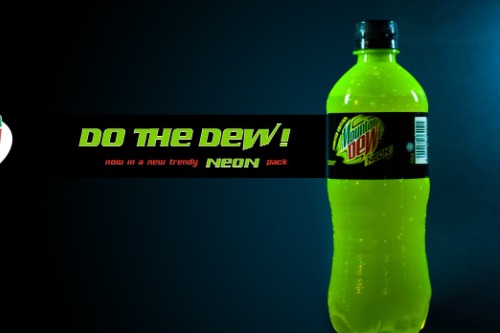
In 2013, Mountain Dew released an ad featuring a goat named Felicia in a police lineup alongside African American men, with a battered woman attempting to identify her assailant. The ad was criticized for perpetuating racial stereotypes and making light of violence against women. Critics labeled it as one of the most racist commercials in history. Mountain Dew quickly pulled the ad and issued an apology for the oversight.
This controversy underscored the necessity for cultural sensitivity and awareness in advertising. The combination of racial undertones and trivialization of assault led to widespread condemnation. It highlighted the importance of diverse perspectives in the creative process to avoid such missteps. The incident also demonstrated how quickly public opinion can mobilize against perceived injustices in media.
8. Nationwide’s “Boy” Super Bowl Ad (2015)
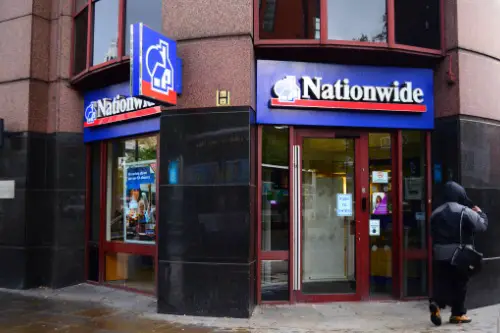
Nationwide’s 2015 Super Bowl commercial featured a young boy narrating all the life experiences he would miss because he had died in a preventable household accident. The ad aimed to raise awareness about child safety but was criticized for its dark and somber tone during an event typically associated with celebration. Viewers felt it was inappropriate and unsettling for the Super Bowl’s festive atmosphere. Nationwide defended the ad’s message but eventually pulled it due to the negative reception.
This case highlighted the challenges of addressing serious topics in advertising, especially during events with a different emotional tenor. While the intention was to promote safety awareness, the execution was deemed jarring and misplaced. It served as a lesson for brands to consider context and audience expectations when delivering important messages. The incident also sparked discussions about the appropriateness of blending somber themes with entertainment.
9. Peloton’s “The Gift That Gives Back” Ad (2019)

Peloton’s 2019 holiday commercial featured a husband gifting his already-fit wife a Peloton bike, followed by her documenting her fitness journey in a series of video diary clips. Many viewers found the ad unsettling, with critics arguing that it sent a tone-deaf message about body image and gender roles. The portrayal of the woman’s nervousness and her apparent gratitude for the gift struck some as reinforcing outdated ideas about women needing to maintain a certain physique for their partners. As backlash mounted, the company’s stock took a hit, and Peloton ultimately pulled the ad.
This controversy highlighted the importance of tone and storytelling in advertising. While Peloton intended to showcase the excitement of a fitness transformation, the execution came across as uncomfortably close to a “husband demands wife stay fit” narrative. The reaction showed how quickly public sentiment can turn against a brand if an ad is perceived as out of touch. It also served as a lesson in ensuring marketing messages empower consumers rather than alienate them.
10. Hyundai’s “Pipe Job” Ad (2013)

Hyundai released a commercial in the UK, but it faced enough backlash in the U.S. to be pulled globally. The ad depicted a man attempting to commit suicide in his garage using his Hyundai’s exhaust, only to fail because the car emitted clean, water vapor-based emissions. The ad was intended to highlight Hyundai’s eco-friendly technology, but it was widely condemned for making light of suicide. After an outpouring of criticism, including from people personally affected by suicide, Hyundai pulled the ad and apologized.
This incident underscored the importance of sensitivity when incorporating serious issues into advertising. What was meant to be a clever way to promote an environmentally friendly car instead came across as deeply inappropriate. The backlash showed that even well-intentioned marketing can backfire if it fails to consider the emotional weight of certain topics. Hyundai’s response reinforced the growing awareness around responsible mental health messaging in advertising.
11. Ford India’s “Bondage” Ad (2013)
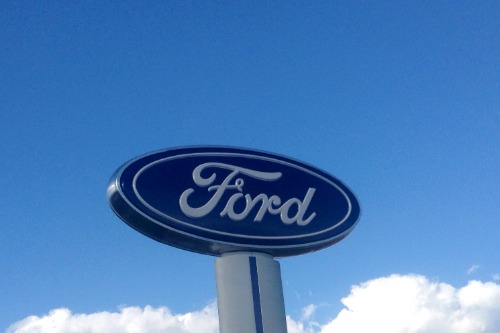
Ford India released a series of cartoonish print ads in 2013, including one featuring former Italian Prime Minister Silvio Berlusconi with three women tied up in the trunk of a car. The ad was meant to promote the car’s spacious storage capacity but was widely condemned for its sexist and offensive imagery. Given Berlusconi’s history of scandals involving women, the ad seemed even more tone-deaf. After immediate backlash, Ford apologized and removed the campaign.
This controversy demonstrated the need for global brands to be mindful of cultural and political sensitivities. What may seem like a bold or humorous concept can quickly become a PR disaster if it touches on serious societal issues. The Ford India case also underscored the importance of having multiple levels of review before an ad is released. It served as a reminder that brands must carefully consider the implications of their messaging, especially when dealing with controversial figures or themes.
12. Just for Feet’s “Hunting Humans” Super Bowl Ad (1999)

In 1999, Just for Feet, a now-defunct shoe retailer, aired a Super Bowl commercial that featured a group of white men in a military-style vehicle tracking a barefoot Black man in Africa. They eventually force him to wear a pair of running shoes, and he appears horrified. The ad was immediately condemned for its colonial and racist imagery, with many questioning how it made it to air. Facing overwhelming criticism, Just for Feet pulled the ad and later blamed its advertising agency for the concept.
This commercial remains a textbook example of how cultural insensitivity can ruin a brand’s reputation. The imagery evoked disturbing historical parallels that were impossible to ignore. Even if the intent was meant to be humorous, the execution came across as offensive and dehumanizing. The scandal contributed to Just for Feet’s rapid decline, proving that a single bad ad can have lasting consequences.
13. Bud Light’s “Up for Whatever” Campaign (2015)
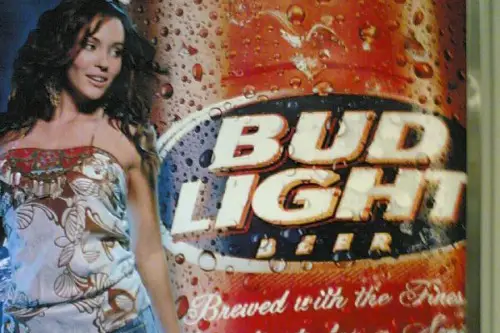
As part of its “Up for Whatever” campaign, Bud Light released bottles with the slogan: “The perfect beer for removing ‘no’ from your vocabulary for the night.” The tagline was widely criticized for appearing to promote non-consensual behavior, especially in the context of alcohol consumption. Critics pointed out that the wording dangerously echoed language associated with sexual assault. Bud Light quickly responded by discontinuing the bottles and issuing a public apology.
This controversy underscored the importance of responsible messaging, especially for alcohol brands. Even if the intent was to promote spontaneity and fun, the phrasing opened the door for serious misinterpretations. The backlash was a reminder that advertisers must carefully consider how their words may be perceived beyond their original intent. It also reinforced the importance of corporate accountability in addressing consumer concerns.
14. Nike’s “I Am the Bullet in the Chamber” Ad (2008)
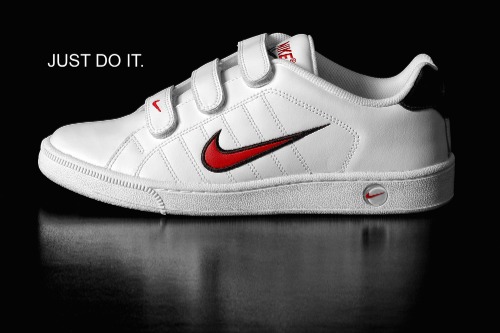
Nike released an ad featuring Oscar Pistorius, the South African Paralympic athlete, with the tagline: “I am the bullet in the chamber.” The ad was meant to emphasize Pistorius’ speed and determination, but after he was charged with murdering his girlfriend, Reeva Steenkamp, in 2013, the slogan took on a horrifying new meaning. Nike immediately pulled the ad as the case gained international attention. The unfortunate timing turned what was meant to be an empowering campaign into an uncomfortable association with violence.
This case illustrated how unforeseen events can drastically alter the meaning of an ad. While brands can’t predict the future, they can be more mindful of the language and imagery they use. The incident also highlighted the risks of associating a campaign too closely with a single individual. It served as a lesson in the volatility of celebrity endorsements and the need for brands to have contingency plans.
15. LifeLock CEO’s Social Security Number Ad (2007)

In a bold marketing move, LifeLock CEO Todd Davis publicly displayed his real Social Security number in a 2007 ad to prove his company’s security services worked. The campaign backfired spectacularly when Davis’ identity was stolen multiple times. Fraudsters used his information to take out loans, open accounts, and rack up debt, undermining the very service LifeLock was promoting. The company was later fined by the FTC for misleading claims and had to rework its entire security approach.
This marketing disaster highlighted the dangers of overpromising in advertising. While LifeLock aimed to showcase confidence in its product, the execution resulted in real-world consequences that shattered consumer trust. The incident reinforced the importance of truth in advertising, particularly in industries dealing with security and personal information. It also became a cautionary tale about the limits of bold marketing stunts.


